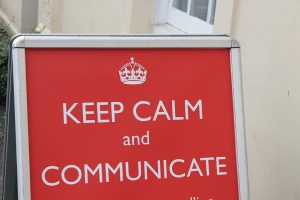
In the 1920s, two cereal companies were neck and neck in the race to win over the world’s tastebuds, vying to be king of the breakfast table.
One hundred years later, one of them is twice the size of the other and their flagship product has a market share of 10%, compared to the other’s which holds less than 1%.
The two companies were Kellogg’s and Post, makers of Corn Flakes and Grape Nuts respectively. The turning point? The Great Depression of the 1930s.
Post responded to the economic circumstances and their uncertain impact on demand by hunkering down and cutting back on communication. Kellogg’s took the opposite approach and continued to tell audiences about its products, even launching a new offering; Rice Krispies.
The result – Kellogg’s increased profits during the depression and was in a stronger position for further growth once the economy recovered. It was the starting point for a leadership position they’ve held ever since.
It’s an illuminating example of how communication with our target audience is even more important in difficult times. Now is not the time to stop communicating – in fact, just the opposite.
Clear, customer-focussed communication is essential – it helps position you as a leader in your industry, retain relationships, explain how you have modified your business and place yourself in a strong position for recovery.
1. Positioning
In a crisis, people are looking for advice, guidance and sometimes inspiration. They want to hear from those with the skills and knowledge they don’t have themselves, people who can help them to steer through unknown territory. If you can provide that knowledge, a crisis is the time to share it. Content marketing is not about selling, it’s about providing information, inspiration and even entertainment. It’s about providing information that is genuinely useful, helpful and trustworthy.
2. Retaining relationships
With face to face frozen, meetings mothballed and conferences cancelled, many of the traditional ways businesses build and retain relationships are just not feasible during our current physical distancing regime. Online content takes on an even greater role, therefore, in helping businesses stay ‘in front of’ their clients, and uppermost in their minds. Online communication is of course not a new part of business relationships, but it becomes more significant as the direct contact stops,
3. Communicating change
Many businesses are having to adapt their operating model – a restaurant that has to become a 100% take-away business; a factory that modifies its production line to make essential supplies; a personal trainer running online ‘group’ sessions. All these businesses need to communicate the fact that they are still operating and how they are serving their clients and continuing to deliver value.
We shouldn’t forget internal communication too – with staff working remotely from home, strong communication is essential to keep teams working effectively and morale healthy.
4. Positioning for recovery
We know this situation will end, even if we don’t know exactly when. At that point, businesses need to be in a strong position to recover. It’s the ones who have shared their skills and ideas, retained their client relationships, continued to deliver value and kept their teams who will be in the strongest position to rebound.
An expert business view
Michele Carson, business coach at Influence, says communication is vital for successfully navigating the changes ahead. She sees COVID-19 impacting business in three waves, each requiring communication with the market.
Wave 1, the immediate response, requires businesses to review and (if required) adapt their message strategy. Wave 2 sees businesses adapt their products and services to support the changing market. They need to clearly explain how this will help their clients. Wave 3 is planning for the longer term, and how to make changes sustainable, including communication to the market. You can read the full interview with Michele here. She stresses that, communication is an essential part of a business’ strategy through all three Waves of the changing business landscape.
Surviving and thriving
In challenging times, it’s tempting for businesses to be so focussed on their own survival that they reduce the amount of communication with their market. But as Kellogg’s realised 100 years ago, tough times require more, not less, communication. A strategy that puts compelling content and a strong message as a top priority, can be a powerful tool in not only surviving a crisis, but in coming out stronger on the other side.
Just like Corn Flakes.
